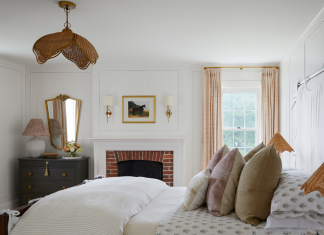
For more than a decade, colour film production was effectively a duopoly shared by two giants of the industry: America’s Eastman Kodak and Japan’s Fujifilm.
The other two colour-film big boys – Germany’s Agfa and Italy’s Ferrania – collapsed in the 2000s, alongside a number of other smaller players like Konica, the companies wrongfooted by digital’s rapid improvements and adoption.
By the time of the Covid pandemic, even Fujifilm looked like a company considering calling time on its colour film production, raising the possibility that only one company in the world would be left in the market.
A lot has changed in a half decade.
Adox, Original Wolfen and even Britain’s black-and-white champion Harman Technology (the makers of Ilford films) have entered the arena, producing new colour emulsions of variable but usually improving quality. Amidst that, the rumblings of a once-popular Chinese player became increasingly loud.
China Lucky Film produced a range of films under the Lucky brand, including a range of colour negative films produced from the early 2000s, initially with the help of Kodak. The films were cheap and decent, if not quite up to the standards of the best Kodak, Fujifilm or Agfa emulsions of the time.
Falling sales in its developing world markets, however, eventually led to China Lucky Film pulling production in 2012.
It has started re-selling improved versions of its 100 and 400-ISO black-and-white films since Covid, no doubt persuaded by a rising interest in analogue photography in the last decade. Rumours of a colour negative film started to surface last year, but few expected them to be releasing it by the end of 2025.
Well, they have.
Lucky Color 200’s rapid… ahem… development was detailed by various photography blogs and websites over the course of this year, with an official unveiling taking place at the Shanghai Image & Vision Expo in China in July. China Lucky Film had indeed produced a colour film and – with the deepest respect to Harman Technology – the results shared online looked a lot closer to a normal colour film than the first generation of Harman Phoenix.
But that first batch of Lucky Color 200 has proved elusive, at least to photographers outside of China. Some reports suggested that it might not be properly available until some time in 2026.
But: someone on the r/AnalogCommunity subreddit spotted that Chinese film brand Reflx Lab was offering rolls of the new film at $9.99 a roll. Even with postage from China, this made three rolls cheaper than a three-pack of Kodak Gold 200 here in London. I ordered as soon as I could. (That first batch sold out in a flash, though Reflx Lab is offering Lucky Color 200 again and has added 120 rolls to the line-up for the same price.)
After the films arrived, I made sure I shot them as quickly as possible – especially given that in the UK it was the start of November and sunny days were very much no longer a certainty.
I put these films through three different cameras to see how Lucky Color 200 rendered with different lenses.
These are the cameras I used:
Roll 1 – Minox 35 AF: A nifty little autofocus camera made by Minox in West Germany in the late 1980s. The four-element 32mm f.3.5 lens is sharp enough when the subject sits in one of its four focus zones but can’t be compared to the quality of many SLR or rangefinder lenses. I shot these in late afternoon/early evening light around Greenwich in south-east London.

Roll 2 – FED-3: This Soviet-era L39-mount rangefinder is typical of the no-nonsense cameras produced by the Kharkiv camera maker during the Cold War, with a shutter based on the venerable Leica II despite being a camera made in the 1970s. FEDs often came in Industar lenses and I used a typical Industar-61 52/2.8 lens – less lauded than the Jupiter-8, but still capable of excellent results. I shot this roll around Canterbury in Kent on a sunny Saturday afternoon.

Roll 3 – Contax Aria: The Contax Aria is one of my favourite SLRs, made by Kyocera of Japan in the 1990s but using the classic Contax name. The Aria has an exceptionally accurate exposure system and its Zeiss-made lenses are nothing short of exceptional. I shot this roll on the Zeiss 45mm f/2.8 pancake lens, around Deptford and Greenwich in south-east London.

All of the films were developed and scanned by Analogue Films in London’s Shoreditch. These are standard scans, just like most of the colour developing I do there.
The only editing I have done here is some slight tweaks to contrast where required, but I have not used any colour balancing. These colours are as close as possible to those on the original scans.
I’d urge you to look at each of the rolls above in their separate posts above, and bear in mind that all of these films were on different cameras with some definite variability in conditions (the roll shot on the FED-3 is the only one that can be said to have been shot in bright sunlight).
Lucky Color 200 certainly does not resemble Kodak’s colour films, despite the American company’s role in helping them produce films in the early 2000s. In fact, in some conditions the film that it most resembles – especially in the roll shot on the Minox 35AF – is Agfa’s Vista 200 from the early 2000s. I’d even go so far to say that it reminds me of expired Agfa Vista 200 in some shots. Extra contrast was needed to bring blacks back into some of the shadow areas, especially in the pics taken of the Thames.
As it ages, Vista 200 leans heavily towards red and purple. You can see some examples of this on my Flickr set shot on the film.

This expired-Agfa look, however, doesn’t come with enlarged or excessive grain, however.
The roll shot on the FED-3 renders colours most accurately. Again, its colour tones aren’t as warm or gold-leaning as you might see on Kodak’s Gold or ColorPlus 200. It had no problem capturing some fantastic texture in Canterbury’s historic streets.
With some decidedly less intense sunlight in Deptford on the Contax Aria, Lucky Color 200 again creeps towards a red/purple bias, though the results don’t get too much in the way of the images. And, of course, this colour bias takes only a few clicks to get rid of via colour correction tolls in software such as Adobe Photoshop or Lightroom.
I’d be more than happy to add rolls of Lucky Color 200 to the camera bag for sunny weather trips in the future. Expect more experiments to come, including some test shots with colour-correction added.







